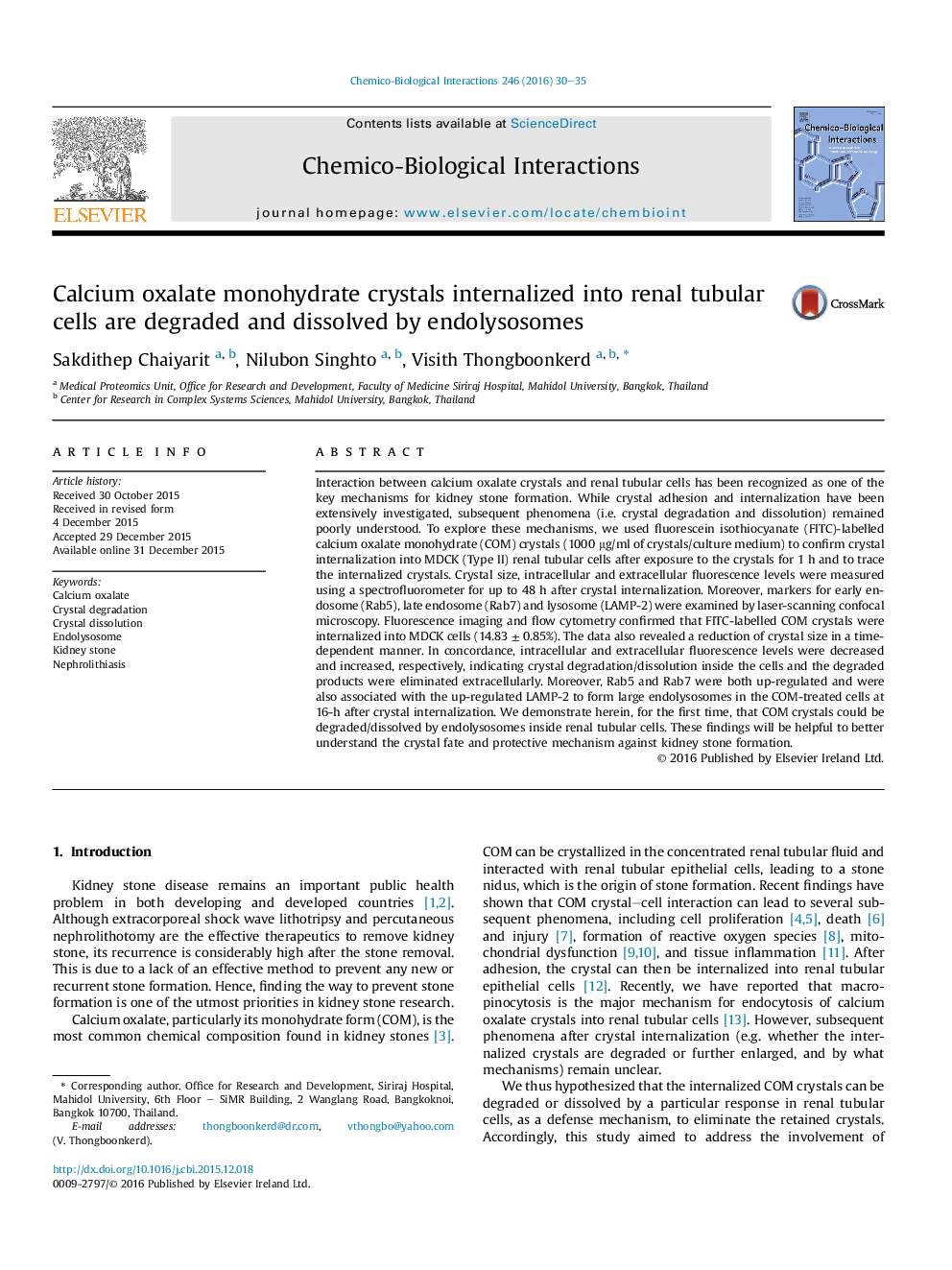| کد مقاله | کد نشریه | سال انتشار | مقاله انگلیسی | نسخه تمام متن |
|---|---|---|---|---|
| 2580061 | 1561595 | 2016 | 6 صفحه PDF | دانلود رایگان |
• FITC-labelled COM crystals were internalized into MDCK cells (14.83 ± 0.85%).
• The internalized crystals were reduced in their size in a time-dependent manner.
• In concordance, intracellular fluorescence level was progressively decreased.
• On the other hand, extracellular fluorescence level was increased.
• The internalized crystals were surrounded by co-localized Rab5, Rab7 and LAMP-2.
Interaction between calcium oxalate crystals and renal tubular cells has been recognized as one of the key mechanisms for kidney stone formation. While crystal adhesion and internalization have been extensively investigated, subsequent phenomena (i.e. crystal degradation and dissolution) remained poorly understood. To explore these mechanisms, we used fluorescein isothiocyanate (FITC)-labelled calcium oxalate monohydrate (COM) crystals (1000 μg/ml of crystals/culture medium) to confirm crystal internalization into MDCK (Type II) renal tubular cells after exposure to the crystals for 1 h and to trace the internalized crystals. Crystal size, intracellular and extracellular fluorescence levels were measured using a spectrofluorometer for up to 48 h after crystal internalization. Moreover, markers for early endosome (Rab5), late endosome (Rab7) and lysosome (LAMP-2) were examined by laser-scanning confocal microscopy. Fluorescence imaging and flow cytometry confirmed that FITC-labelled COM crystals were internalized into MDCK cells (14.83 ± 0.85%). The data also revealed a reduction of crystal size in a time-dependent manner. In concordance, intracellular and extracellular fluorescence levels were decreased and increased, respectively, indicating crystal degradation/dissolution inside the cells and the degraded products were eliminated extracellularly. Moreover, Rab5 and Rab7 were both up-regulated and were also associated with the up-regulated LAMP-2 to form large endolysosomes in the COM-treated cells at 16-h after crystal internalization. We demonstrate herein, for the first time, that COM crystals could be degraded/dissolved by endolysosomes inside renal tubular cells. These findings will be helpful to better understand the crystal fate and protective mechanism against kidney stone formation.
Journal: Chemico-Biological Interactions - Volume 246, 25 February 2016, Pages 30–35
